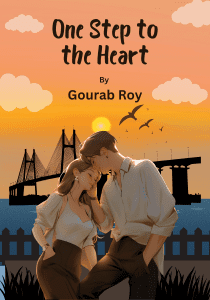Percy Bysshe Shelley, one of the most significant poets of the Romantic era, composed the elegy Adonais in 1821 in response to the premature death of his fellow poet, John Keats. Written in Spenserian stanzas, Adonais is both a tribute to Keats and an exploration of grief, death, and immortality. It stands as one of the most profound elegies in English literature, filled with emotion, philosophical contemplation, and transcendental idealism. The poem is not only an expression of personal loss but also a meditation on the relationship between art, nature, and the eternal spirit. Shelley’s treatment of Keats as the figure of Adonais (derived from the Greek myth of Adonis) serves as a rich metaphor for the poet’s transition from the mortal to the divine.
Summary of Adonais
The poem begins with an invocation to the “mournful Muse” to guide the poet in expressing grief over the death of Adonais, a figure who represents John Keats. In the opening stanzas, Shelley creates an atmosphere of sorrow as the forces of nature, personified as divine beings, gather to mourn Adonais’ death. The reader is introduced to Urania, the goddess of poetry and Adonais’ spiritual mother, who laments the loss of her beloved son. The imagery of flowers, nightingales, and a weeping Nature highlights the poet’s sense of the cosmic scale of Keats’ death, suggesting that the loss is not only personal but also universal.
The elegy moves into a series of lamentations, where Shelley criticizes those who contributed to Keats’ death, namely his critics. Shelley famously alludes to the hostile reviews of Endymion that appeared in the Quarterly Review, suggesting that their harshness exacerbated Keats’ illness and led to his demise. However, despite this bitterness, Shelley’s tone soon shifts from anger to philosophical reflection. In the later sections of the poem, he turns away from worldly grief to explore the idea of transcendence. Adonais, once a living man, is now immortal in the realm of ideal beauty and truth, where death holds no sway.
In the final stanzas, Shelley contemplates his own mortality and the prospect of reuniting with Adonais in the afterlife. He sees the poet’s death as a release from the suffering of the material world into a higher plane of existence. The poem concludes on an uplifting note, with Shelley finding solace in the belief that Keats, as Adonais, has become one with the eternal, leaving behind the pain of life and becoming part of the universal spirit of beauty.
Analysis of Adonais
Shelley’s Adonais is one of the finest examples of an elegy, a poem written in memory of the dead. It draws heavily from classical traditions, particularly the pastoral elegy, a form that dates back to the ancient Greeks. The title of the poem, Adonais, alludes to Adonis, a figure in Greek mythology who was beloved by the goddess Aphrodite and who died tragically young, only to be mourned by the natural world. Shelley uses this mythological framework to express the tragedy of Keats’ early death and to elevate his life and work to the level of divine significance.
The poem also reflects Shelley’s deeply philosophical and spiritual views, which are influenced by Neoplatonism, a school of thought that emphasized the transcendent reality of beauty and truth. In Adonais, Keats’ death is not an end but a transition to a higher form of existence. Shelley suggests that the physical body may perish, but the creative spirit—embodied in the poet’s work—lives on in eternity. This theme of immortality is central to the poem, as Shelley grapples with the idea that Keats’ genius will outlive his mortal frame.
One of the most striking aspects of Adonais is its fusion of personal grief with a broader meditation on the nature of life and death. The poem begins with raw sorrow and anger, particularly in the sections where Shelley condemns Keats’ critics, but it gradually transforms into a celebration of the poet’s ascent to a divine state. The imagery throughout the poem reflects this progression, moving from the somber and dark to the ethereal and luminous. The natural world, which mourns the loss of Adonais in the early stanzas, becomes a symbol of renewal and eternal life as the poem unfolds.
Shelley also uses Adonais as a vehicle for his own anxieties about mortality. Although the poem is ostensibly about Keats, it is clear that Shelley is also reflecting on his own fate. The poet’s yearning for reunion with Adonais in the afterlife hints at his own preoccupation with death, a theme that would become all the more poignant given that Shelley himself died only a year after writing the poem.
Character Analysis
Although Adonais is not a narrative poem in the conventional sense, it does contain several key figures whose symbolic roles enrich the elegy’s meaning. Chief among them is Adonais himself, the representation of John Keats. Through the figure of Adonais, Shelley elevates Keats to the status of a mythological hero, akin to Adonis or Orpheus. Adonais is depicted as a pure and innocent soul, unfairly attacked by his critics and cut down in his prime. Yet, rather than dwelling solely on the tragedy of his death, Shelley uses Adonais to explore the idea of artistic immortality. Adonais is not only a man who has died, but a spirit that transcends the earthly realm to become part of the eternal truth.
Urania, the mother of Adonais, represents both the muse of poetry and the nurturing spirit of the creative imagination. Her sorrow is profound, but it also signifies the enduring connection between the poet and the divine. As the goddess of poetry, Urania embodies the protective force that shelters artistic creation, even in the face of mortal death. She mourns not only the loss of her son but also the loss of the beauty he brought into the world. Her grief, however, ultimately gives way to the understanding that Adonais has ascended to a higher plane of existence.
The poet himself, often seen as Shelley’s own voice within the elegy, plays a complex role in the poem. He is both a mourner and a philosopher, expressing deep personal grief while also contemplating the nature of death and immortality. Through the figure of the poet-narrator, Shelley engages in a dialogue with himself, reflecting on his own mortality and the fate of his work after his death. This introspective aspect of the poem adds a layer of self-awareness, as Shelley uses the elegy as a way to come to terms with his own fears of oblivion.
Finally, the poem features several symbolic figures who represent the forces of nature and the cosmos. The pastoral imagery, including flowers, the moon, and the nightingales, serves to underscore the connection between the natural world and the spiritual realm. These figures are not characters in the traditional sense, but they play a vital role in the poem’s larger meditation on the eternal cycle of life, death, and rebirth.
Themes in Adonais
1. Death and Immortality
One of the central themes of Adonais is the relationship between death and immortality. At its core, the poem grapples with the finality of physical death and the possibility of an afterlife or spiritual transcendence. Shelley’s portrayal of Keats’ death as a release into a higher state of being reflects his belief in the immortality of the creative spirit. For Shelley, the poet’s genius cannot be destroyed by death; rather, it becomes part of the eternal beauty and truth that transcend the material world. This theme is echoed in the poem’s imagery, which shifts from the somber and sorrowful to the ethereal and luminous, suggesting that death is not an end but a transformation.
2. The Power of Art
Closely related to the theme of immortality is the idea that art and beauty have the power to transcend death. Throughout Adonais, Shelley suggests that Keats’ poetry, like the work of all great artists, will live on long after his physical body has perished. This belief in the enduring power of art is one of the driving forces behind the poem. Shelley envisions Keats as part of a continuum of artists and poets who have achieved immortality through their work. The act of creation, for Shelley, is a form of resistance against the oblivion of death.
3. Grief and Consolation
Adonais is, at its heart, an elegy—a poem of mourning. The early stanzas of the poem express profound grief over the death of Adonais, with both the poet and the natural world joining in the lament. However, as the poem progresses, this grief gives way to a sense of consolation. Shelley finds solace in the idea that death is not the end but a gateway to a higher state of existence. This shift from sorrow to consolation reflects Shelley’s broader philosophical views on life and death, as he moves from mourning the loss of Keats to celebrating his entry into the realm of the eternal.
4. The Role of the Poet
Throughout Adonais, Shelley explores the role of the poet in society and the world. He portrays Keats as a figure who is not only a creator of beauty but also a victim of the world’s cruelty. The harshness of Keats’ critics, whom Shelley blames for hastening his death, serves as a reminder of the challenges faced by artists in a world that often fails to recognize their genius. However, despite these challenges, Shelley ultimately presents the poet as a figure who transcends the limitations of the material world through the power of art. In this sense, the poet is both a martyr and a hero, whose work lives on even after death.
5. Nature and the Sublime
Nature plays a prominent role in Adonais, both as a mourner and as a symbol of the eternal cycle of life and death. The natural world reflects the poet’s grief in the early stanzas, with images of flowers, birds, and the moon weeping for Adonais. However, nature also serves as a symbol of renewal and immortality, particularly in the later sections of the poem. The sublime beauty of the natural world becomes a metaphor for the eternal spirit of the poet, suggesting that just as nature endures beyond the death of individual creatures, so too does the creative spirit endure beyond the death of the poet.
Conclusion
Adonais is a profound exploration of grief, death, and the possibility of immortality. Through the figure of Adonais, Shelley transforms John Keats’ death into a meditation on the eternal nature of art and the creative spirit. The poem moves from personal sorrow to a celebration of the poet’s transcendence, offering a vision of death as a release into a higher state of being. Rich with classical allusions, philosophical reflections, and vivid imagery, Adonais stands as one of the most powerful elegies in the English language. It is not only a tribute to Keats but also a testament to Shelley’s own belief in the enduring power of art and beauty.




